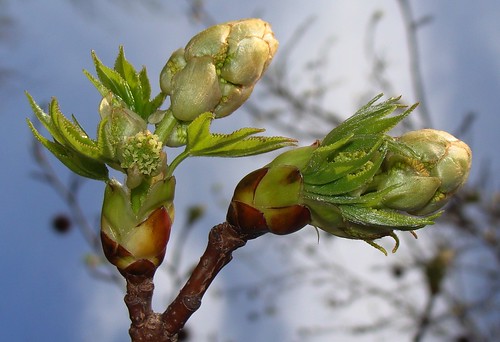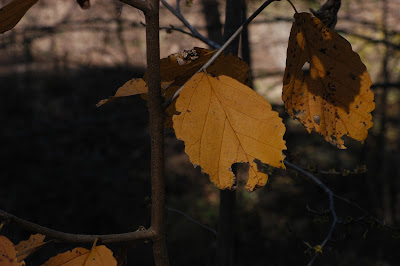Hamamelidaceae - Witch-Hazel Family
"A Year With the Trees" - Tree Number 47
Sweetgum
Liquidambar styraciflua
Spring
Leaves: The leaves are light green in the spring, alternate and simple. They have a distinct star shape with five points and deep V-shaped sinuses. The edges are finely toothed.
Twigs and Buds: The twigs and buds have a distinct pleasant odor when scraped with your fingernail or broken.
Summer
The name, Liquidambar, says it all. The resin of the Sweetgum tree is indeed a "liquid ambar".
The aromatic resin can be harvested from the tree trunk and used as incense, perfume, jewelry, soap, medicine, and adhesive.
 |
| The Sweetgum Tree in July. Photo by Robert Priddy |
The leaves have become a darker green since the spring. Some of the leaves have little tears and holes since they have been on the tree since spring. There is an incredible difference on the summer tree - the little green balls with the spikes. So beautiful!
The Sweetgum balls hold seeds, and the balls protect the seeds by the prickly spikes. These seeds hold the life of a new tree and they are also nourishment for birds and small mammals such as chipmunks and squirrels. There can be up to 50 seeds per ball. My daughter called it, "A holder of seeds" in a beautiful art piece she gave to a few years ago.
Sweetgum trees are the home for the caterpillar of the beautiful and romantic Luna Moth. The luna moth will live only a brief moment in time, coming out of it's cocoon by the light of the summer moon, finding its mate and flying together for a night and day before laying its eggs to begin life anew the following year....now, that is truly the essence of living in the moment.
I will be looking for the Luna moth this summer emerging from the Sweetgum Tree that lives by my house.
 |
A Sweetgum leaf in July
|
Fall
 |
| The Sweetgum Tree in October |
 |
The Sweetgum Tree in October light.
The Sweetgum tree is beginning to change color. |
Winter

Height of a fully grown tree: Usually 80-100 feet in height and 2-4 feet in diameter.
Bark: Gray, furrowed with ridges.
Twigs: Frequently have corky ridges.
Fruit: Spiky balls will be hanging from the tree into the winter months. The trees are usually at least 30 years old before forming the spiky balls. The fruits are spherical up to 1.5 inches and have sharp points.
Buds: Large terminal buds are present.
Many wildlife eat the Sweetgum balls for nourishment in the winter. Birds and squirrels and chipmunks live around Sweetgum trees to reap the benefits of the nourishing value of the Sweetgum balls.
The gum produced in the bark has been used as chewing gum and also medicinally for sore throats, coughs, and colds. The essential oil of the leaf contains similar properties to Australian Tee Tree oil.
 |
This Sweetgum ball has landed on a burning bush where it is resting on this cold January day.
|
Champion Sweetgum Tree
The Champion Sweetgum tree lives in Burlington, New Jersey. It is
115 feet tall and has a circumference of 230 inches. See www.americanforests.org for more information on this national champion Sweetgum tree.
www.americanforests.org
For the love of the trees,
Becky
 |
| Liquidambar styraciflua |
"The secret of health for both mind and body is not to mourn for the past, worry about the future, or anticipate troubles, but to live in the present moment, wisely and earnestly."
Budda


.JPG)


















































